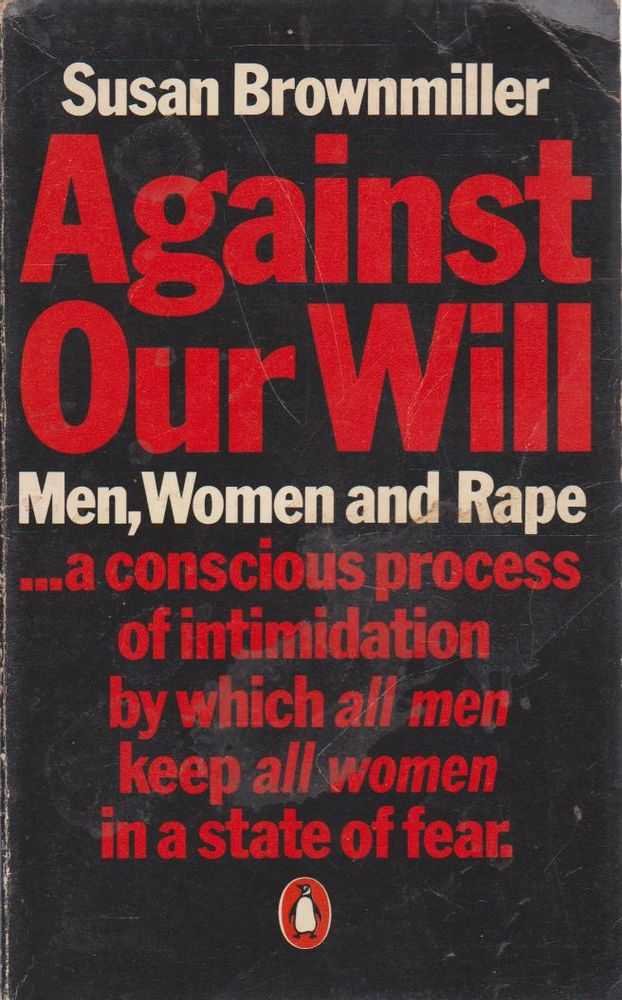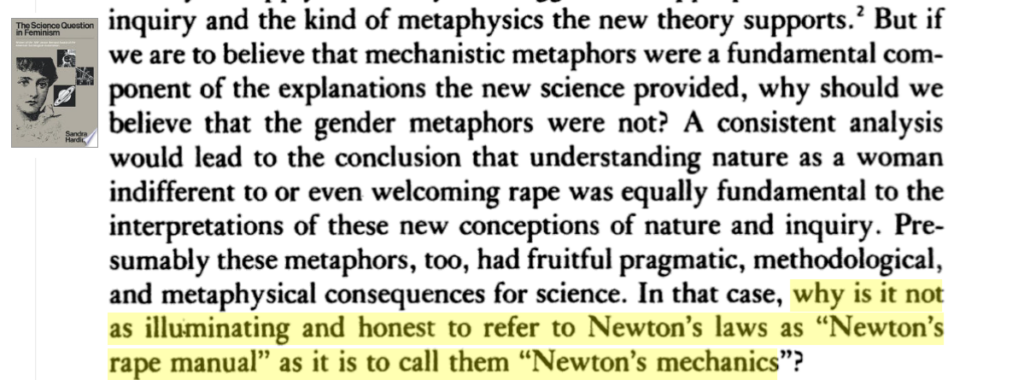Susan Brownmiller was een Amerikaanse feministe die vooral bekend is voor haar boek Against our will: Men, women, and rape (1975), vertaald als Tegen haar wil: mannen, vrouwen en verkrachting.


Against our will
Against our will stelt dat ‘vanaf de prehistorie tot nu, verkrachting een cruciale rol heeft gespeeld. Het is niets meer of minder dan een bewust mechanisme van intimidatie waarmee alle mannen alle vrouwen in een staat van angst houden’.
Nu weet ik wel dat verkrachting een problematisch begrip is, zo is het bijvoorbeeld tegelijkertijd wél en geen vier-letter-woord (zie noot1), maar zeggen dat alle mannen verkrachting gebruiken als een bewust mechanisme om alle vrouwen te onderdrukken, is een brug te ver. Het doet denken aan de recent overleden Sandra Harding (1935 – 2025) die in 1986 van oordeel was dat Newtons Principia mathematica een ‘verkrachtingshandleiding’ is.
In datzelfde Against our will definieert Brownmiller pornografie als de ‘onversneden essentie van antivrouwenpropaganda’ en vergelijkt ze het met enerzijds de antisemitische propaganda van het Derde Rijk die de ideologische basis legde voor de Endlösung, en anderzijds met het goedpraten van ‘n-woord’-grapjes die de onderdrukking van de zwarten bestendigt.
Het boek past binnen een feministische traditie van de jaren zeventig die paradoxaal genoeg even extreem als toonaangevend was.
De Nederlandse vertalingen in dit stuk zijn van de auteurs van deze blog.
Noot 1: Verkrachting is een van de meest verwerpelijke daden die de mens kent. Toch is het woord verkrachting geen taboe woord. Dat is wel zo voor bijna alle woorden die te maken hebben met a) de ontlasting en b) de voortplanting. Je zegt bijvoorbeeld niet schijten, kakken, pissen in beleefd gezelschap en evenmin neuken, poepen, kut en lul. Dat soort woorden gebruik je niét bij je eerste bezoek aan je schoonfamilie, om maar iets te zeggen.
Continue reading
